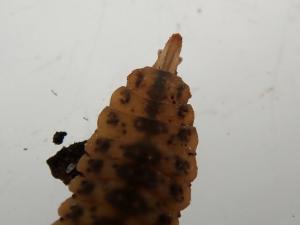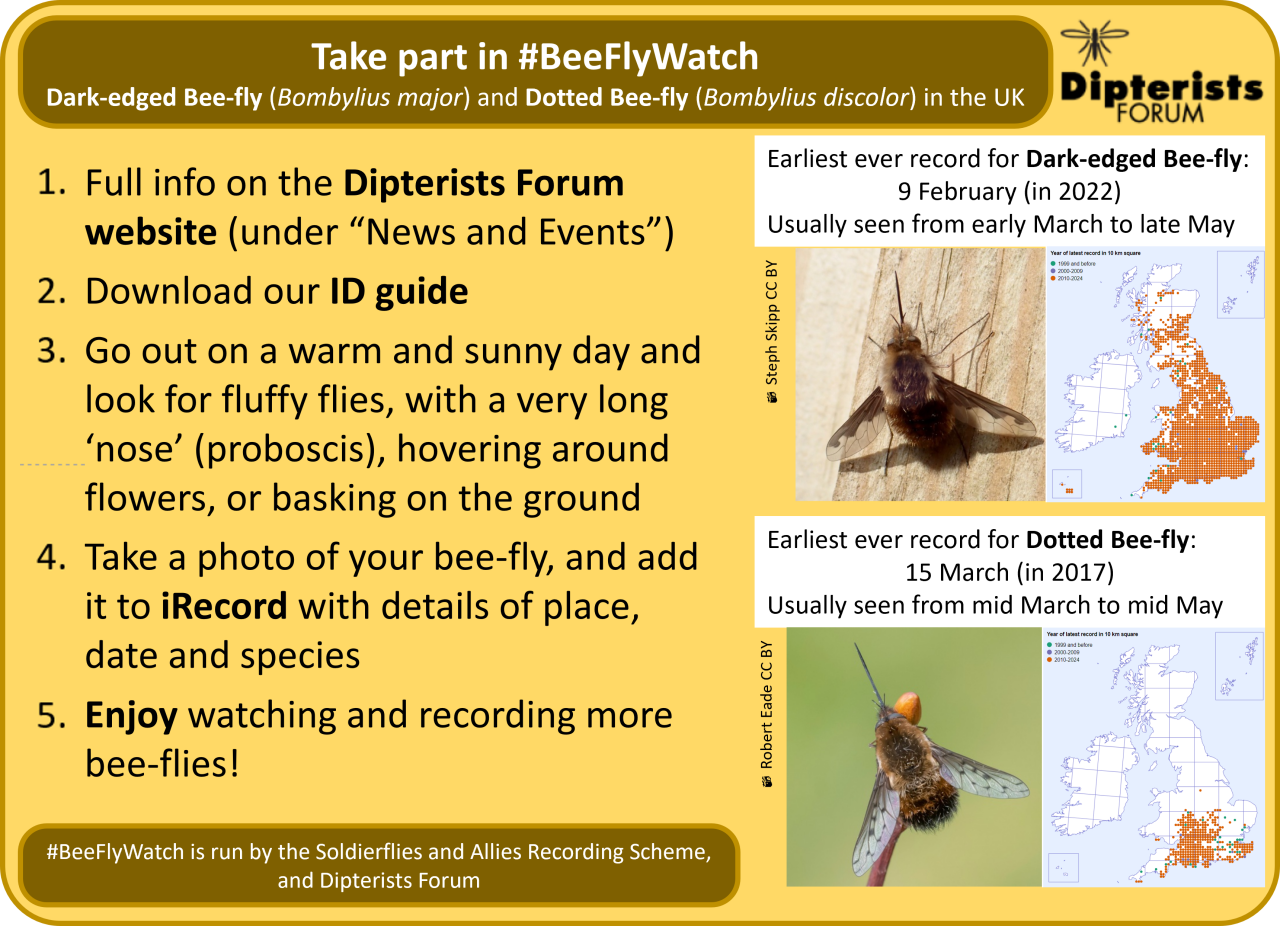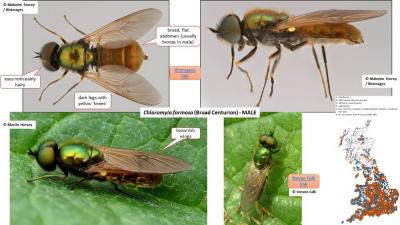Soldierflies and Allies Recording Scheme
Take part in Bee-fly Watch 2024
In warm springs the first bee-flies are out in February, but early March is a more typical start to their activity. Once again Bee-fly Watch will be taking place to encourage as many people as possible to enjoy watching these fantastic flies, and recording them to add to our knowledge of distribution and flight periods.
Identifying and Recording Soldierflies
This residential course incorporates everything you need to know to be able to accurately identify and record soldierflies.
With a mix of classroom presentations, laboratory-based sessions, and field-based activities, our expert tutor will guide you through the lifestyles, ecology, and morphology of UK soldierflies. Attendees will be provided with detailed information on sampling equipment and techniques with practical hands-on opportunities to collect live specimens.
New identification guides for soldierfly allies
The Soldierflies and Allies Recording Scheme has added two new identification guides to the set which can be downloaded from the scheme website:
The new guides cover bee-flies in genus Villa, and horseflies (or clegs) in genus Haematopota. Both groups contain some tricky species and hopefully these guides will help you recognise them, and to find and record these fascinating flies.
Subscriptions for 2022 now due
Thank you to all members who have already paid their 2022 subscriptions. This is a great help.
New: larvae of soldierflies and allies

A section on larvae and other early stages has been added to the Soldierflies and Allies Recording Scheme website. This is work in progress and will hopefully build up into a useful resource.
An introduction to Soldierflies and allies
Soldierflies and allies (including robberflies, bee-flies, horseflies and others) include some of our largest and most colourful insects. Some are easy to find whereas others require dedicated searching, but these flies are within reach of anyone with an interest in insects. This workshop will provide an opportunity to get more familiar with the identification features, using microscopes and specimens, as well as providing an introduction to how to find and record these flies.
Led by Martin Harvey and Alex Dye.
An introduction to Soldierflies and allied groups
Soldierflies and allies (including robberflies, bee-flies, horseflies and others) include some of our largest and most colourful insects. Some are easy to find whereas others require dedicated searching, but these flies are within reach of anyone with an interest in insects. Using the extensive NHM collections we will use microscopes and keys to give you experience in recognising this group of flies and learning how to identify them. You will find out how to take part in the soldierflies and allies recording scheme, and where to go for further help and identification advice.


